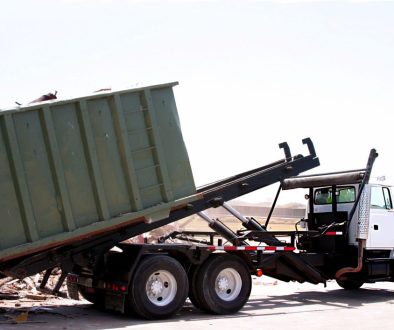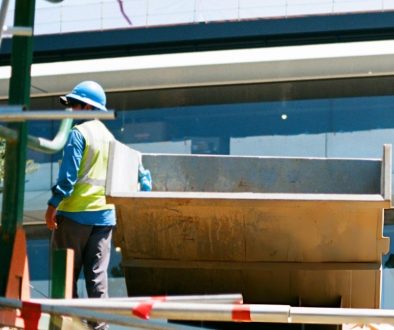When you’re clearing out a shop, there’s a lot to think about. From shelving and displays to old stock and packaging waste, things can pile up fast. It’s easy to underestimate just how much rubbish a shop clearance can produce. Hiring a skip can take away a chunk of the hassle, but to really make it work for you, it’s worth having a plan in place. That way, you’re not just getting rid of stuff – you’re doing it in a way that’s simple, quick and doesn’t leave you feeling overwhelmed.
In places like Stone, Cheshire, where shops range from small boutiques to larger retail spaces, organising waste during a clearance can be tricky without the right setup. Whether you’re closing down, renovating, or simply having a seasonal refresh, thinking clearly about waste removal will save you time and stress. Skip hire can make the process smoother, as long as it’s used in the right way.
Planning Your Shop Clearance
Good planning makes a big difference when it comes to clearing out your shop. It reduces stress, stops you from wasting time and helps avoid any last-minute surprises when the skip arrives. One of the first things you should do is take a proper walk-through of the entire space. Look at what needs to go – old furniture, displays, outdated marketing materials, broken equipment or anything gathering dust in the back room.
It helps to break the clearance into zones. Think about the stockroom, checkout area, window displays and storage spaces. Creating a checklist for each of these areas can guide the process and make everything feel more organised. You’ll also want to work out what types of waste you’re dealing with. Is it mostly cardboard and packaging? Or are there heavier items like shelves and broken fittings? Knowing what needs to be removed helps you choose the right skip, and it also makes loading more straightforward.
Here are a few things to tick off while planning:
– Walk through each section of the shop and note what needs to be cleared
– Sort items into categories like recyclable, general waste or electricals
– Arrange things in piles or zones to make collection easier
– Get a rough idea of the number of bulky or oddly shaped items
– Don’t forget areas outside, such as back doors or yards that collect rubbish
Try not to leave this to the last minute. The better your plan, the easier everything else becomes, especially when timing your skip drop-off and collection. That way, you won’t end up with rubbish sitting around too long or having to order a second skip because the first one filled up faster than expected.
Choosing The Right Skip Size
Skip hire isn’t one-size-fits-all. Picking the wrong skip can cause delays or cost you more than necessary. Too large, and you’ve overpaid. Too small, and you’re stuck with leftover rubbish and possibly calling for a second skip. The aim is to get the right size from day one.
Skips come in a range of sizes. Here’s a general breakdown to help with selection:
– Mini skips: Good for small clearances, light rubbish or clearing just one section of a shop
– Midi skips: Best suited for medium amounts, like moderate shop refits or stockroom waste
– Builders’ skips: Ideal for full clear-outs or when you’ve got heavy and bulky items to get rid of
– Large skips: Useful when fitting out or closing down a large retail space
If you’re unsure, lean slightly bigger rather than smaller. Shops going through clear-outs often underestimate how much rubbish is hiding in cabinets, displays or behind counters.
One example we’ve seen in Stone is a café that underestimated the amount of wood and broken seating they needed to throw out. They hired something too small and had to pause their renovation partway through to wait for a second skip to arrive. That delay pushed back their reopening schedule. A slightly bigger skip at the start would have saved time and stress.
Look at the space you have available for the skip, too. Can it be placed near the shop entrance or at a convenient access point? Consider whether the skip needs to go on a public road, as this may require a permit from the council. Planning for this ahead of time avoids frustrating delays later on.
Efficient Loading Techniques
Once the skip is in place, how you load it makes a real difference. You want to get the most out of the space you’ve paid for, and the way it’s packed can affect collection or even safety. Think of it like packing the boot of a car – not everything just gets thrown in. A bit of thought can go a long way.
Start with heavier items first, placing them at the bottom of the skip. This creates a solid base and helps with weight distribution. It also prevents lighter materials from being crushed or flying out if there’s wind. Things like broken shelving units, stockroom cabinets or old equipment should go in first.
Next, fill in gaps using smaller, flexible items like bags or broken-down boxes. If anything can be dismantled or flattened – do it. Tables with legs, cardboard cartons, even old signage – these all take up less room when broken down. Stack items neatly and flush against each other where possible, so you’re not wasting valuable room.
Top off the skip with lighter waste like packaging, soft furnishings and anything else that isn’t bulky. Try not to overfill the skip past the top edge. If it’s loaded beyond capacity, collection could be delayed or refused.
Here’s a quick guide to make loading simpler:
– Start with flat, heavy items at the bottom
– Break down larger pieces to save space
– Fill in empty corners as you go
– Stack waste from front to back, top to bottom
– Keep lighter materials and soft waste for the top
– Don’t overload to the point of spilling above the skip’s sides
Packing smartly avoids needing a second skip and helps keep things tidy while you work through the clearance. It also keeps your worksite safer and more manageable.
Legal Regulations And Safe Disposal In Stone
Before loading up the skip with everything from your shop, it’s worth checking what can and can’t go inside. Stone, like other towns in Cheshire, follows local council rules regarding certain waste materials. If you don’t follow those guidelines, it could mean extra costs or the skip being refused altogether.
Some items are banned from general skips, especially anything classed as hazardous. This normally includes things like:
– Electrical items (fridges, computers, lights with special fittings)
– Paint tins (unless fully dry)
– Chemicals or cleaning agents
– Tyres and batteries
– Asbestos or anything suspected to contain it
When sorting out your rubbish pile, keep these materials separate. Don’t assume they can be hidden underneath other waste because skips are routinely checked. If you’re caught with prohibited waste in a skip, the removal firm may issue extra charges or leave it behind.
If your shop has more specialised waste, check what arrangements are available in your area. Stone Borough Council typically outlines what standard skip hire can handle, and anything beyond that may need different disposal methods.
Another thing to think about is where the skip is placed. If it’s going on a public road or pavement, you’ll likely need a skip permit. These need arranging ahead of time and usually come with a small fee. Without this, you could get fined or told to move the skip.
By keeping yourself updated on these simple rules, you avoid hiccups and help things run more smoothly from start to finish.
When It’s Time to Clear Out, Stone’s Got Options
Stone has a mix of high street businesses, small independents and mid-sized retailers. No matter the size or reason for your clearance, hiring a skip can help you stay on top of the rubbish. It saves on several runs to the tip, gets rid of clutter quickly and keeps things more organised from the start.
The space around shops in Stone can sometimes be limited, so having one place to consolidate rubbish helps keep footpaths, alleyways and delivery zones clear. It also cuts back on the risks of slipping hazards caused by boxes or broken furniture waiting for removal.
Whether you’re preparing for a fit-out, shutting down part of your business or just doing a full summer clear-out, skip hire gives you the flexibility to manage large volumes of material all at once. Instead of gradually dealing with rubbish over several days, a skip lets you handle things in one go, often within a set timeframe. That means you can get back to running your business faster.
Planning properly, following safety rules and loading your skip smartly all help make the process smoother. Shop clearance doesn’t need to be chaotic if you approach it with structure. With the right skip size and a bit of upfront sorting, you’ll have everything cleared out without feeling like you’re chasing loose ends.Make your shop clearance seamless with Enviro Skip Hire. Whether you’re tackling a renovation or seasonal refresh, our expert services offer reliable solutions for all your waste challenges. Discover how easy your project can be with skip hire in Stone.




